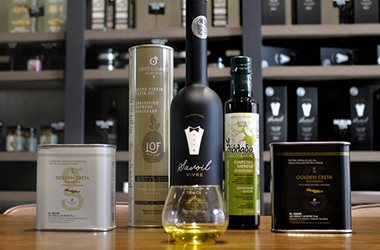Articles
The organoleptic characteristics of the Koroneiki olive variety

The Koroneiki olive variety covers approximately the 60% - 65% of Greek production and is mainly found in "traditional olive groves".
However, the Koroneiki olive variety is also found in many other countries, mainly in Italy, Spain and Australia, due to the special characteristics of the tree.
The rich characteristic and stable organoleptic profile, with the basic condition that the right practices are beign met, from the olive grove to the olive mill and the storage, is familiar for the Koroneiki olive variety.
In particular, the three positive properties (fruity, bitter and spicy) that are met in the extra virgin olive oil, are usually classified as moderate intensities while "intense" and less often "soft" are also found.
In the organoleptic profile of the variety, depending on the effect of factors, we can detect aromas of flowers, green almond, red fruits, olive leaves, vanilla, nuts, basil and citrus.
In recent years, many consumers and professionals have become familiar with the organoleptic characteristics and their connection to the general quality profile of the olive oil, resulting in increased demands for an upgraded organoleptic profile, as well as in greater competition.
The goal should always be the production of olive oil with a clean, natural, but also balanced organoleptic profile. To achieve this goal, certain factors must be taken into account, such as:
1) Climatic conditions
2) Cultivation practices
3) The condition of the olive fruit but also its ripening during the harvest
4) Good practices in harvesting and transporting the olive fruit
5) Olive grove area
6) Oiling conditions (cleanliness, equipment, temperature, water use, oxidation and fermentation control)




